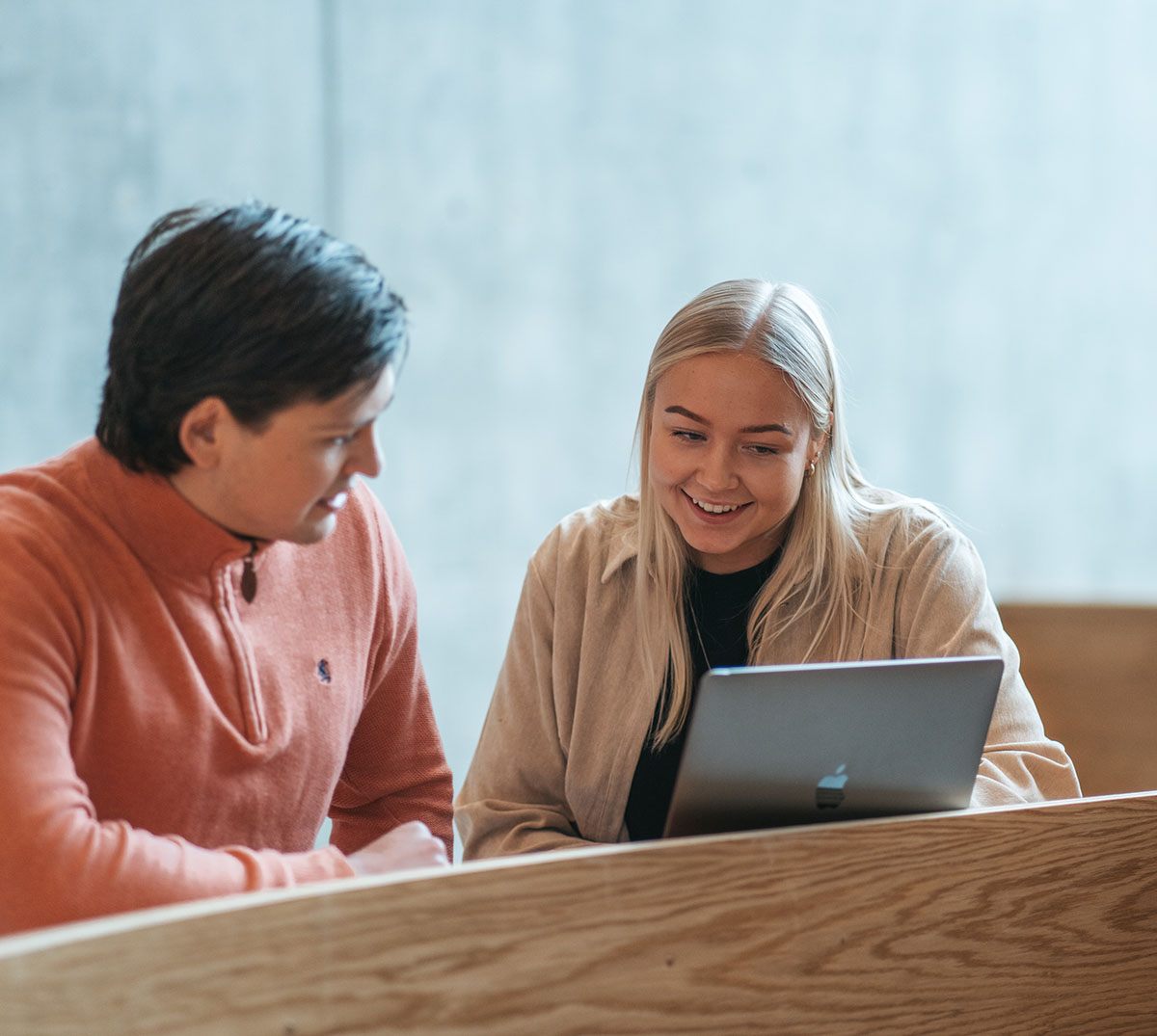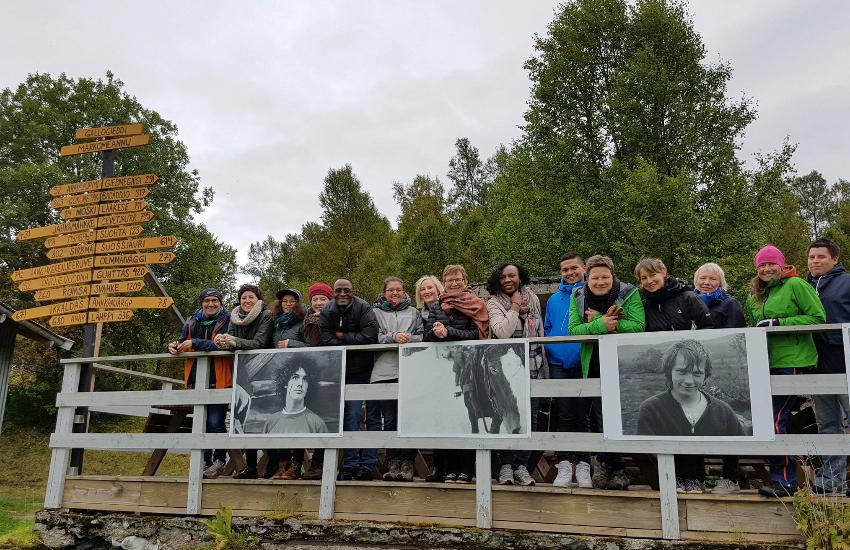Are you passionate about culture, society, and the environment? Join our Master program in Visual and Multimodal Anthropology to conduct impactful ethnographic research and learn documentary filmmaking. The program culminates in creating your own film or multimodal project alongside a written thesis. Gain skills to foster cross-cultural dialogue and advance your career in a dynamic, international environment.
-----------------------------------------------------------------------------------------
Er du engasjert i kultur, samfunn og miljø? Ta en master i visuell og multimodal antropologi, hvor du gjør etnografisk feltarbeid og lærer å lage dokumentarfilm i et internasjonalt forskningsmiljø. Studiet avsluttes med din egen film eller multimodale prosjekt og en masteroppgave. Du bidrar til krysskulturell dialog og får ferdigheter som styrker din profesjonelle karriere.
Her finner du norsk beskrivelse av Master i visuell og multimodal antropologi
Bachelor degree (180 ECTS) or equivalent qualification with a minimum of 80 ECTS in anthropology, sociology, ethnology, folklore, cultural studies, visual culture or other closely related fields of study. Applicants must have a minimum grade average comparable to a Norwegian C (2,5) in the ECTS scale.
Applicants with education from non-Nordic countries must document English language proficiency.
Admission capacity:
20 places
Applicants from Norway or Nordic countries:
Her finner du all informasjon knyttet til søking og opptak.
Applicants within EU/EEA/Switzerland (except the Nordic countries):
You will find more information about admission for EU/EAA applicants here.
Applicants outside EU/EEA/Switzerland and the Nordic countries:
- Applicants in this group has to pay a tuition fee. You can find the prices for the program here.
- You will find more information about admission for Non-EU/EEA applicants here
- Nordic applicants: 5057
- EU/EEA + Swiss applicants: 7165
- Non-EU applicants: 2038
Program description
This two-year full-time master’s programme in Visual and Multimodal Anthropology combines: lectures in anthropological theory and ethnographic methods; filmmaking and practical instruction in camerawork; sound recording and editing; and writing and evocative storytelling. It is grounded in a research environment that has a strong focus on environmental issues, multispecies ethnography, Indigenous peoples, human rights, food systems, migration and diaspora, conflict and resolution, art and activism, among others.
You will develop your own anthropological research project and choose a site to conduct fieldwork, at home or abroad. During fieldwork you will conduct participant observation and gather your multimodal material (video, sound, photographs, drawings, notes, etc.). Working with this material gives unique possibilities to develop anthropological insights about people, places and culture. Multimodal methods also encourage collaboration and meaningful dialogue with protagonists and multiple audiences; this generates novel ways of sharing and communicating your ethnographic insights.
Filmmaking and multimodal production require time and practice to master the craft. The first semester is organised as a complete research and dissemination process, where students undertake a camera-based mini-fieldwork, carry out practical exercises, and edit a short film or other multimodal output. This initial research project is focused on a different theme each year (e.g. tourism, waste, refugees, farming and fishing). It is supported by classes on ethnographic methods, ethnographic film history, video technique and cinematographic language.
During the second semester, you develop your own master’s project. This includes courses on contemporary themes in anthropology, multimodal and evocative storytelling, and a project description. In collaboration with your allocated supervisor, you will develop a feasible project design, including research questions and ethics, methodological approaches, and use of audio-visual media. Following this you will conduct 4-5 months of ethnographic fieldwork.
In the second year of the program you will participate in a series of collaborative film and text seminars, where you will develop your text and film, or other multimodal output, in dialogue with your peers and supervisors.
During the third semester the primary focus will be on your written text, drawing upon your visual and multimodal material as an empirical basis. This will be complemented with lectures on anthropological theory and writing, with guest speakers.
The fourth and final semester is dedicated to editing and producing your film or other multimodal output. This includes time and instruction in the editing suites, roughcut screenings, and ongoing feedback. At the end of the course, you will submit your written thesis and show your film or present your project at a public screening at Verdensteateret in Tromsø – the longest continually running cinema in Europe.
Throughout the program you will have access to cameras, sound equipment, high end software and editing suites, anthropological guidance, and professional film instructors.
The programme is closely aligned with our research group, Ethnographic Action: Researching Transformations of Humans and Environment on a Disrupted Planet (EA:RTH), which includes weekly seminars with invited and local researchers. There is also an active student environment led by Felten, The arctic anthropology student association, which organises film screenings, group lunches and social activities.
For a complete outline of the program, please see the Program structure below.
Learning outcomes
The program in Visual and Multimodal Anthropology focuses on the use of audio-visual materials such as photographs, films, digital media, and interactive technologies to document and interpret cultural practices, social behaviors, and human experiences worldwide. Students gain knowledge of the history and development of visual anthropology, ethical considerations in visual representation, and the impact of new media on anthropological research. They develop skills in ethnographic research, audiovisual tools, and narrative strategies, enabling them to critically analyze and present their findings through film and text. Graduates are equipped to conduct independent research, communicate their work effectively, and contribute to innovation and cross-cultural understanding using multimodal approaches.
Job prospectives
A degree in Visual and Multimodal Anthropology can open doors to a variety of national and international positions in academic research, filmmaking, television, administration, government and non-governmental organisations, journalism, communication, museums, youth and education programs, marketing research.
Studying in this international environment also develops competences in cross-cultural communication as well as valuable assets to several career paths.
Degree Name
Master of Philosophy in Visual and Multimodal AnthropologyAccess to further studies
On successful completion of the degree programme, students may be qualified for admission to a PhD programme in a number of academic areas at the UiT The Arctic University of Norway or elsewhere.
Related professions
Study plan
Language of instruction
Language of instruction is English.
While the lectures are in English, students can also choose to submit their written thesis in any Scandinavian language.
Teaching and assessment
The program is organised as a continuous participatory learning process: lectures, screenings, writing and video/still-photo assignments, and seminars make up the unique cumulative learning process of the two-year program. Students are encouraged to collaborate with each other in developing skills and understandings throughout the study.
The programme includes various types of exams and coursework requirements, such as essays, research papers, and film/photo presentations. Please note that some courses have compulsory requirements. Only students whose coursework requirements have been approved will be allowed to take the examination.
Teaching and assessment methods are described in the course plan for each course.
This Master degree is an intensive program. All courses are compulsory and demand active participation from the students.
Students have the possibility to carry out their fieldwork abroad.


